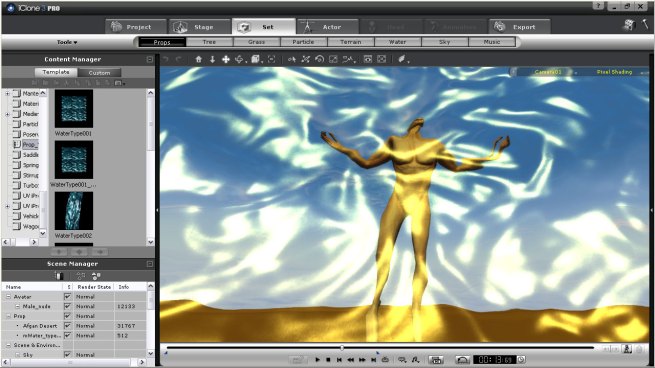
Use the Material Picker to quickly edit or replace individual textures on all of your models
What’s up iCloners? Today’s Tip of the Day is a tiny but powerful tool that again if you haven’t read deep into the 3.1 Updated Texture and Material editing features in the Online Beta index then you may have let this one slip by you. Let me ask you this, have you ever found a really nice Google 3D Warehouse model that you wanted to use but decided not to due to the poor texturing? Well, I know I have, that is until now. With the new Picker Tool you can simply click the texture you wish to enhance, edit or just plain replace and then do so using everything from the Materiall Library to all 6 channel maps and adjustable sliders. Sound good? I thought it might. So here’s how you do it for yourself, open 3DXchange and then choose a model you feel that is a great model geometrically but may lack in the texture department. For this example I use a 1957 Chevy Bel Air model from Google 3D Warehouse, but feel free to edit anything you like with this tip. Covert the model to a Prop file for use in iClone. Once you have it there you will begin to edit and enhance the overall look of the model dramatically, follow the steps below or watch the high speed video provided at the bottom of the post.
- Go to the Set tab
- Click the Props button
- Select the Custom tab
- Load your custom Prop, ( for this example I am using a 1957 Chevy Bel Air to covert it into a custom Low Rider )
- Scroll down in the Modify Panel and locate the Material and Texture Settings portion of the menu
- Click the Pick Eyedropper icon to activate the Picker Tool
- Click any texture on the model you wish to begin editing, ( for this example I begin by editing the headlights of the car )
- Select the Channel Map you wish to edit or replace, ( for this example I add a Glow Map to the Yellow Diffuse Map that is already in place )
- Click the Open button to choose a custom image to apply to the selected Channel Map
- Use the Strength Slider to adjust the intensity of the Map
- Use the Brightness, Contrast, Hue and Saturation Sliders to make further adjustments if you like to any Map
- Click the Pick Eyedropper icon once again and select an area you wish to add a preset Material to ( for this example I applied a Glass Material to the Windshield and Windows of my model )
- Select the Load Material button and make a choice of what will work best for that portion of your model
- Repeat the process until each area of the model suits the design you have in mind
Retrieving and Editing Materials using the Picker Tool in iClone3.1 is a new solution to a old and fustraiting problem where 3D Warehouse has been concerned for sure. Often times you may see models import into 3DXchange with solid white areas that carry no texture or Material qualities over what so ever. Now it is true sometimes simply using the Reload button from the tool bar will help to fix texture fails from time to time, but, why waste time with redundant tasks when you can make what changes that need to be made using the Picker Tool with no fuss. If you want to check out additional information provided by Realluison on Multiple Channel Texture Mapping then visit the Online Beta Index. Or if you like, check out the little video example I have put together for you showcasing the method of how to best utilize the Picker Tool and how to take a sub-par car model and turn it into a pimped out virtual PW with the PT. Enjoy, and Happy Holidays to you all if you hear from Santa before you hear from JimmyJaymz again!






Recent Comments